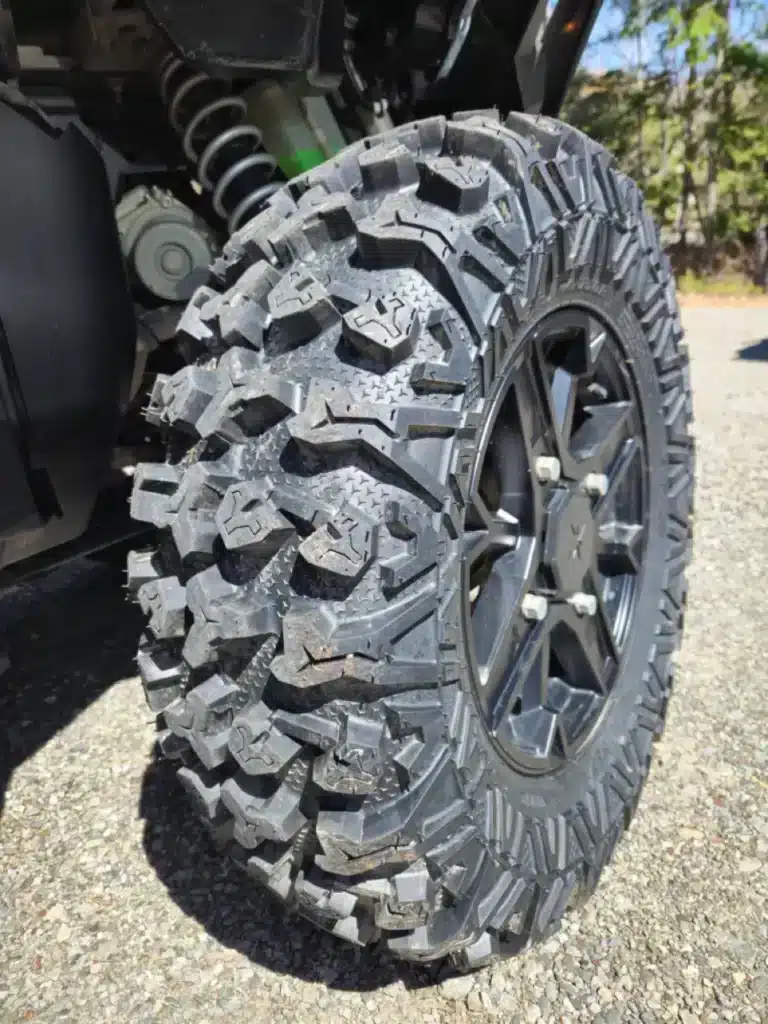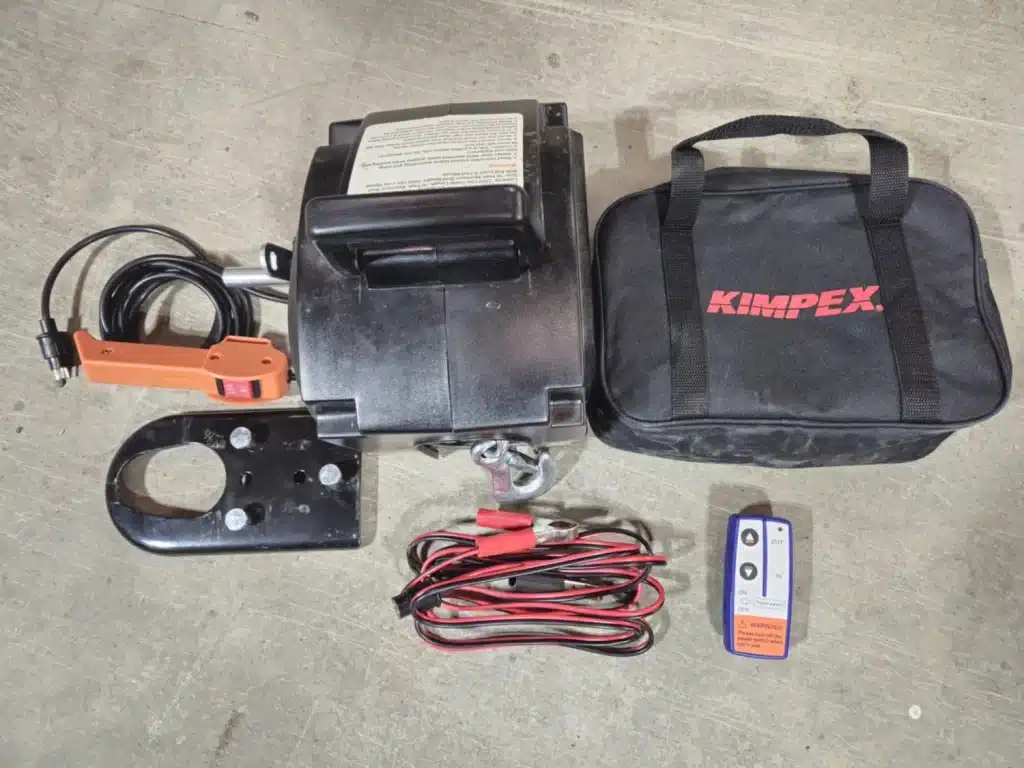The cold weather has arrived and, for many, it’s time to put away our quad. Follow these tips for proper ATV Winter Storage. It’s worth your time and effort to properly store a quad that cost you thousands of dollars. This will allow you to increase the mechanical life of your vehicle and ensure it’s in good condition when spring arrives.
Tips for ATV Winter Storage
Step 1 Clean Your Quad
A proper cleaning is essential to removing all the dust and other dirt that can cause corrosion to appear on metal parts or dark rings on plastic parts. For the purposes of this column, we used Spectro Motorcycle Wash. We prefer this product, as it easily removes the dust and dirt caused by splashes and grease. It doesn’t contain any solvents and doesn’t stain the metal. In addition, it leaves a brilliant, waxed finish.
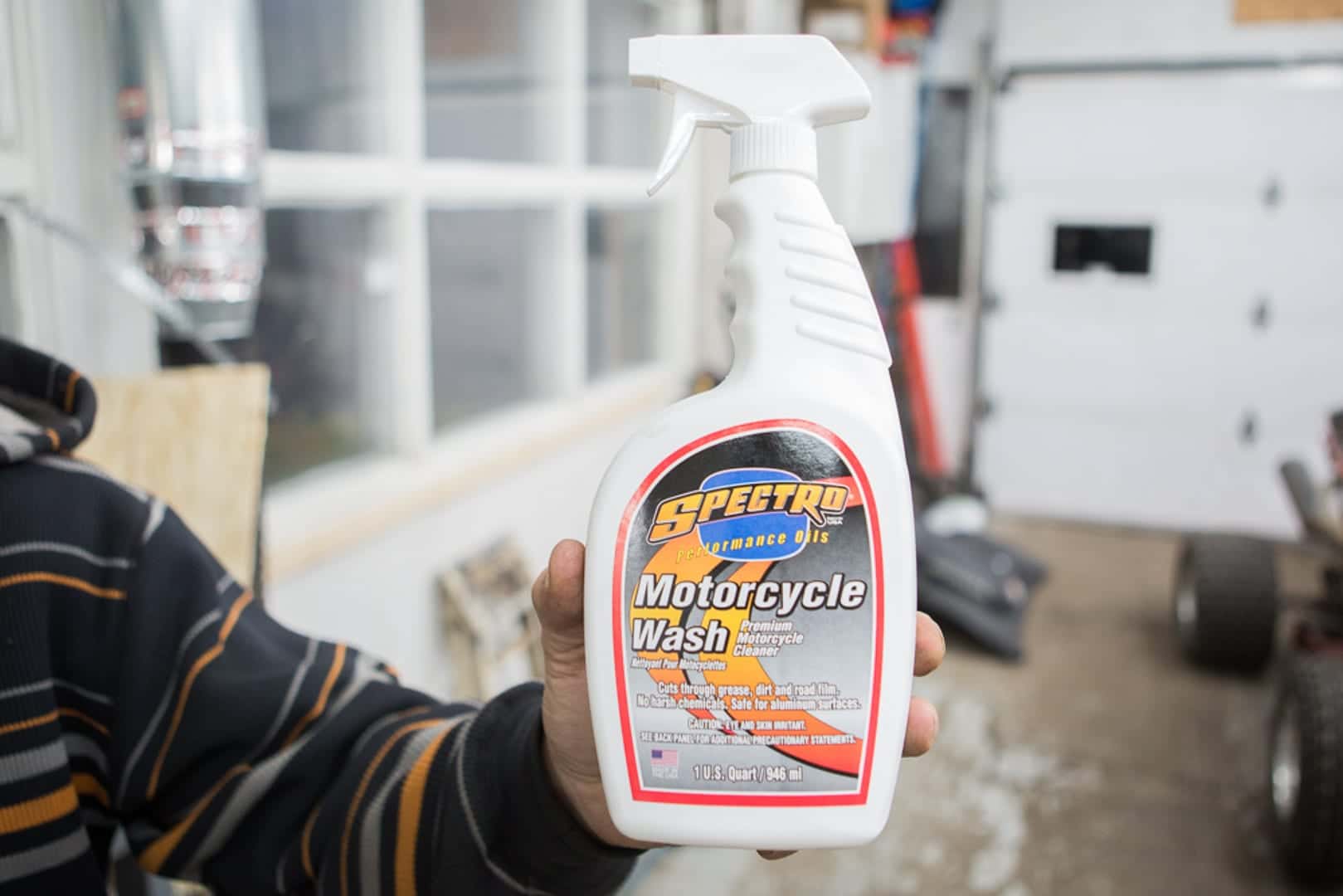
Step 2 Add Gasoline Stabilizer
A stabilizer must be added to the gasoline to prevent gum or varnish from forming as the gasoline deteriorates over time. Ensure that you have enough gasoline in the tank, then add the stabilizer by following the manufacturer’s instructions. We used Kleen-Flo Fuel Stabilizer. This product, which ensures stability for one year, keeps the gasoline in good condition during the winter and makes starting up the quad in the spring easier. You should also start the quad and let it run for a few seconds to ensure the gasoline stabilizer mixture reaches the carburetor.
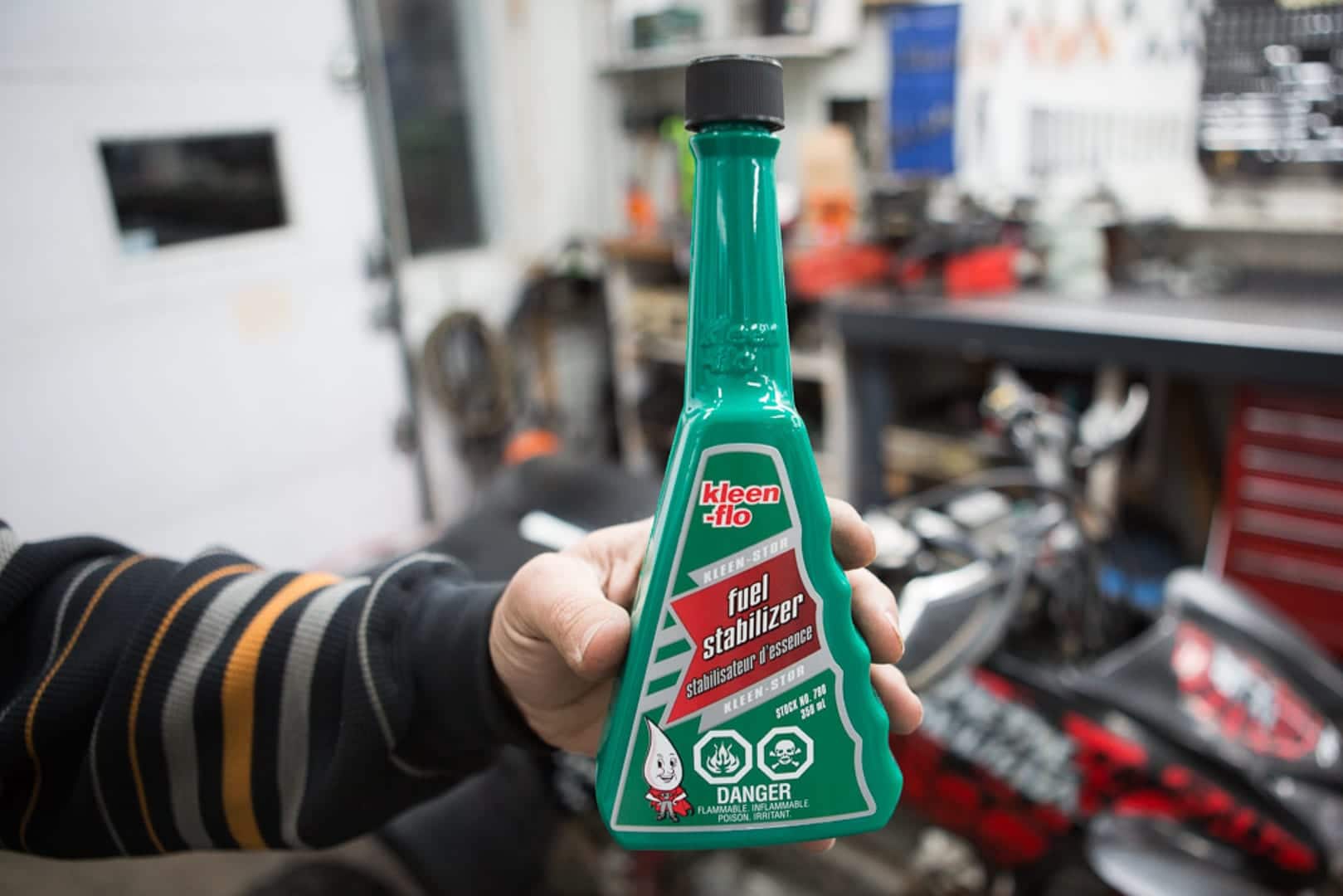
Step 3 Drain the Oil
Drain the oil and change the oil filter. This will prevent corrosion from forming during winter storage, as the combustion of the acids in the oil can corrode engine parts.
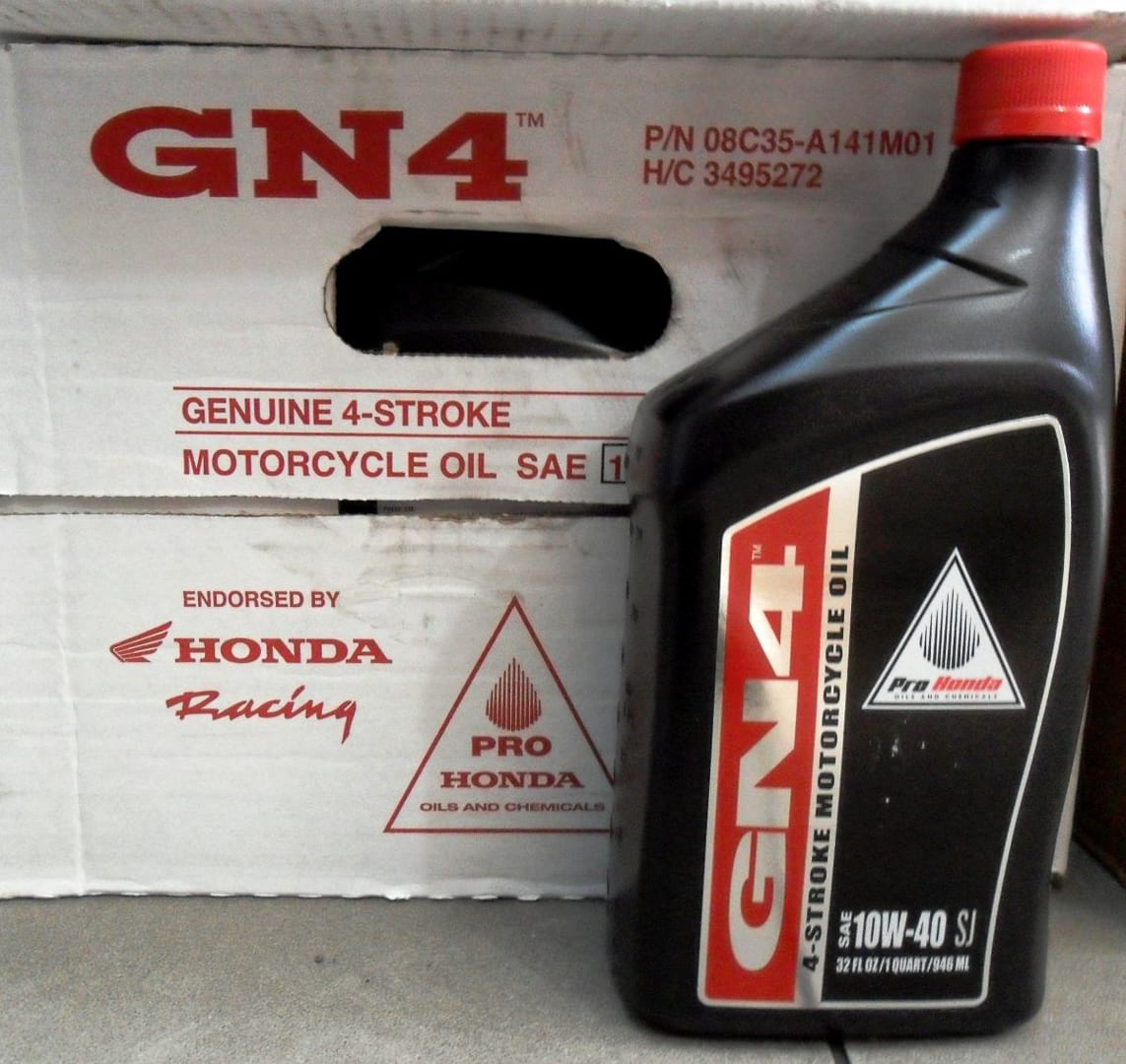
Step 4 Add the Spray Lubricant
Use a good lubricant to protect the engine against rust and corrosion while your quad is stored away. We chose Klotz’s FogON lubricant, which creates a protective shield around the engine and defends it against any environmental factors if the vehicle is not going to be used for a long time. There are two ways to apply the spray. We sprayed the product into the air intake while the engine ran for 5 seconds. This helped maximize the spread of the product without too much burning off.
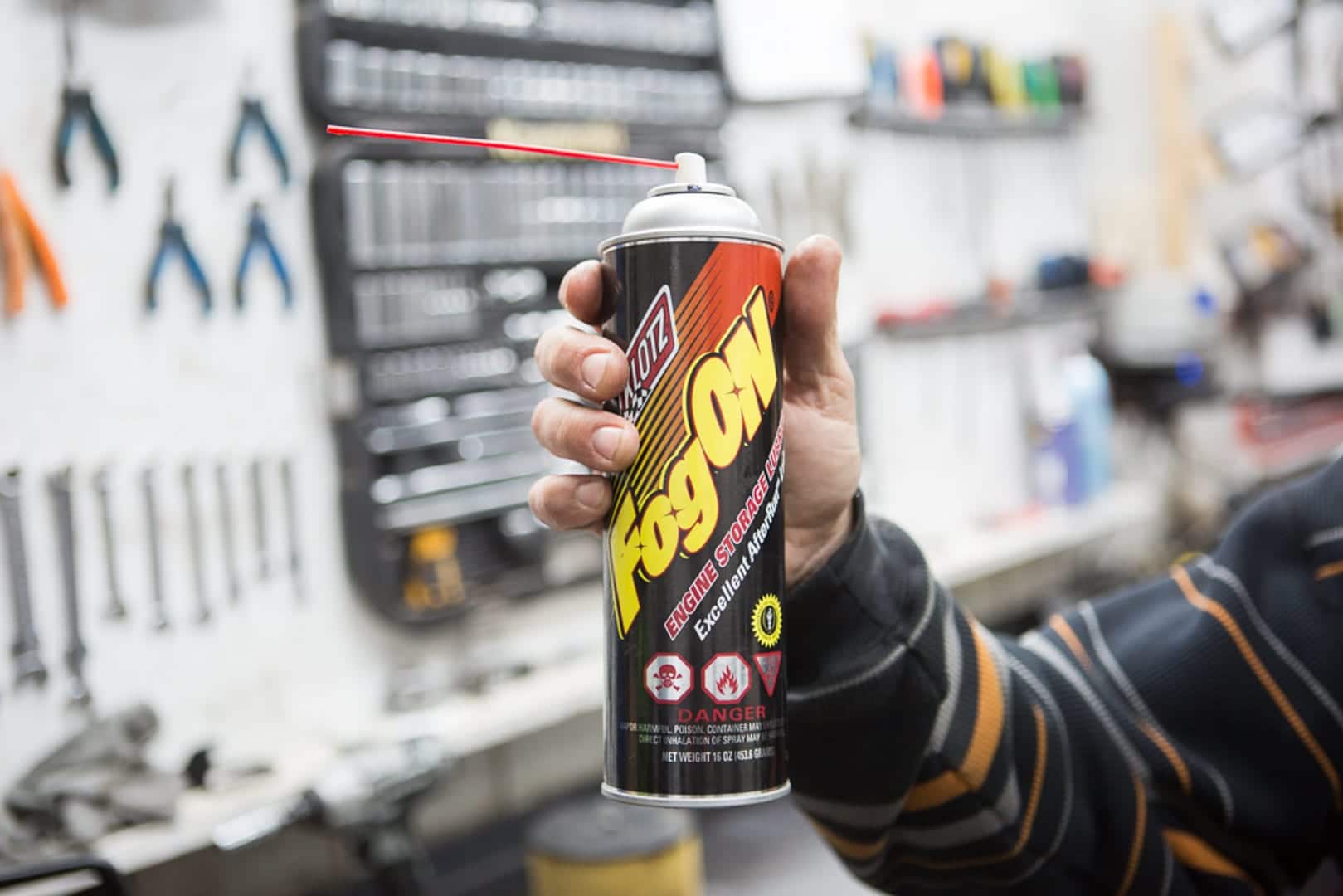
The second method, which applies to quads with a kick starter, consists in applying the product directly to the piston head after removing the spark plug. Next, cycle the piston up and down several times. Don’t skip this step, as it cuts down on the maintenance costs and ensures a clean and quick start-up in the spring.
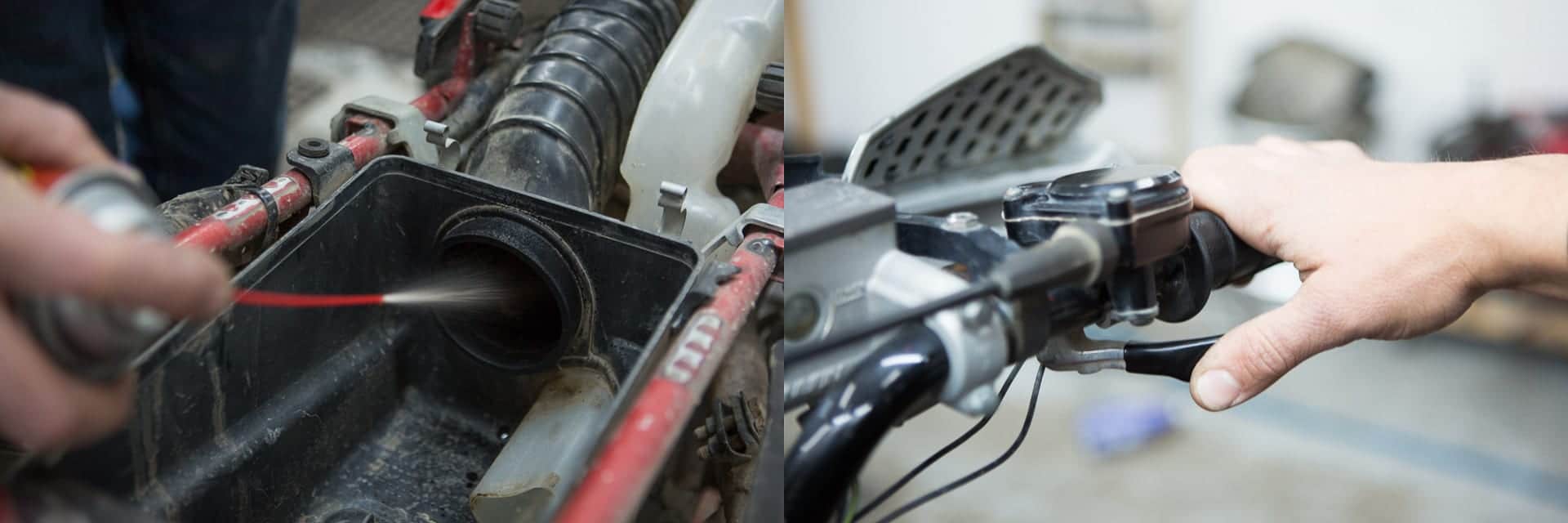
Step 5 Rust Protection
It’s important to apply WD-40 everywhere where there’s metal. This product is very effective in protecting metals by repelling moisture. All you’ll need to do in the spring is use our product, Spectro, or any other cleaner, to remove the WD-40 and thoroughly clean the quad.
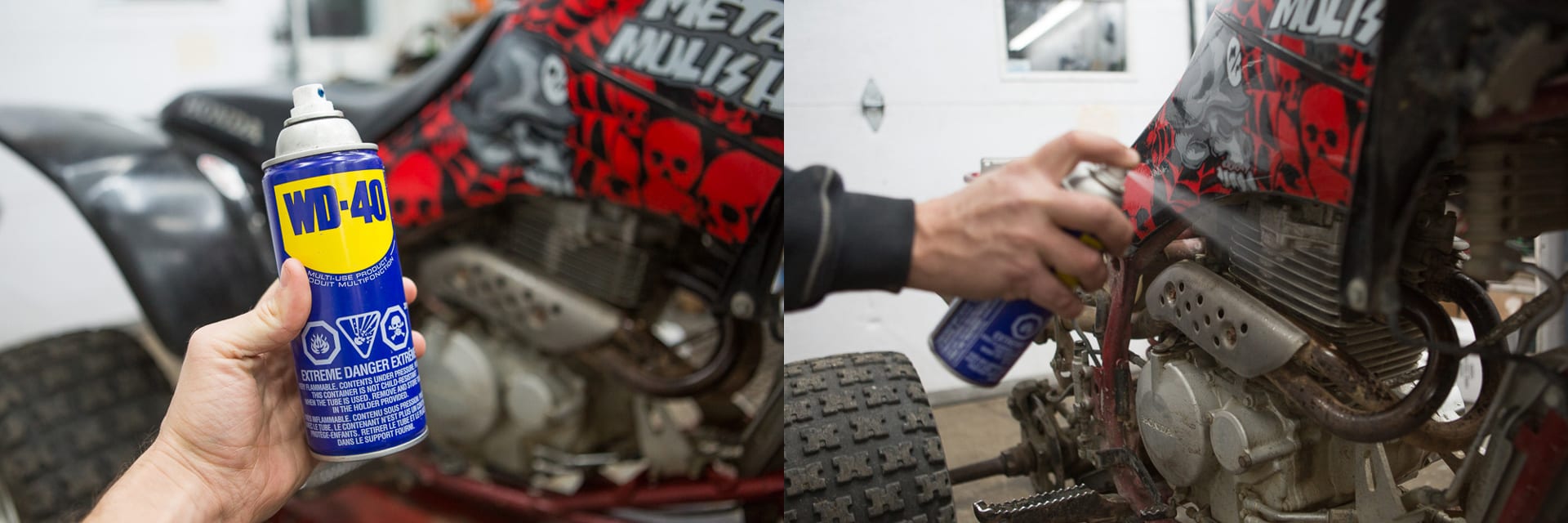
Step 6 Remove the Battery
Disconnect the battery from the terminals and store it in a cool, dry location. A battery that is not being used loses some of its power each day that it’s not used. Storing it increases the life of the battery.
Step 7 Raise the Quad
For more fastidious quad fans, we suggest you raise your quad using a jack. This will increase the life of your shock absorbers and prevent wear and tear on the tires by avoiding the creation of flat spots if the tires begin to deflate.
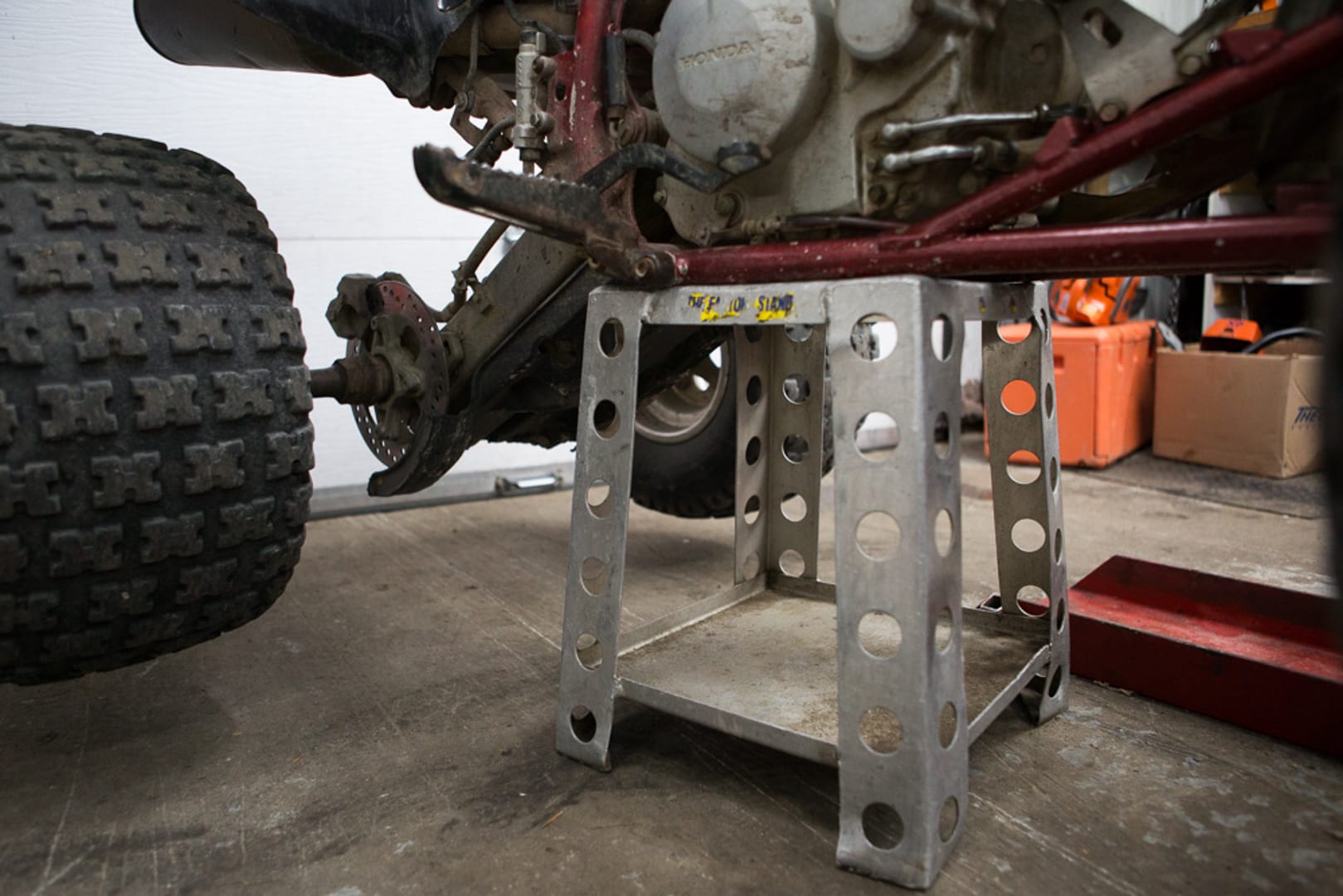
- An important note to those who store their quad outside:
- Store your quad on a flat, paved or concrete surface, away from sunlight.
- Choose a location that allows you to easily access it.
- Avoid locations where there is the risk of vermin, as these animals can chew on your machine.
- Spread a waterproof, protective sheet on the ground to protect the vehicle from moisture.
- Spread a permeable, protective sheet over the quad to protect it from dust or other undesirable substances. It’s important to use a permeable sheet to allow air to circulate and to prevent moisture from accumulating and corrosion from forming.
*Special thanks to Rémy Labeaume at Sport Gilbert 2.0 in Saint-Félicien. He kindly provided the mechanical advice for this column.




